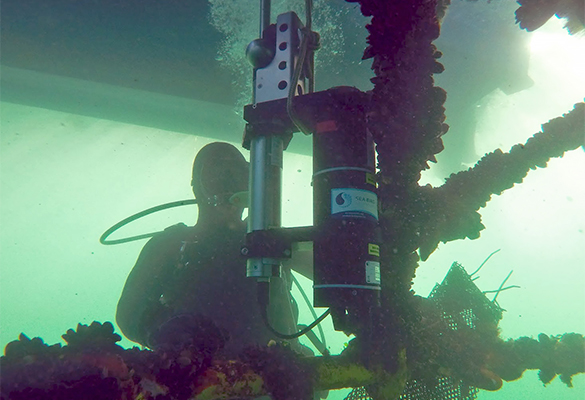The 5 papers below present peer-reviewed research that utilized ISFET pH sensors in varying environments and test scenarios. These range from deployments in rapidly-changing estuarine environments to descriptions of best practices for the Shallow SeaFET, SeapHOx, and Deep SeapHOx.
Applications and Deployments:
- Stephen F. Gonski, Wei-Jun Cai, William J. Ullman, Andrew Joesoef, Christopher R. Main, D. Tye Pettay, Todd R. Martz. Assessment of the suitability of Durafet-based sensors for pH measurement in dynamic estuarine environments. Estuarine, Coastal and Shelf Science, 200 142-168, 2018; DOI: 10.1016/j.ecss.2017.10.020
- Lydia Kapsenberg, Gretchen E. Hofmann. Ocean pH time-series and drivers of variability along the northern Channel Islands, California, USA. Limnology and Oceanography, 61, 953-968, 2016; DOI: doi.org/10.1002/lno.10264
Theory and Operation
- Philip J. Bresnahan Jr., Todd R. Martz, Yuichiro Takeshita, Kenneth S. Johnson, Makaila LaShomb. Best practices for autonomous measurements of seawater pH with the Honeywell Durafet. Methods in Oceanography, 9, 44-60, 2014; DOI: 10.1016/j.mio.2014.08.003
- Cale A. Miller, Katie Pocock, Wiley Evans, Amanda L. Kelley. An evaluation of the performance of Sea-Bird Scientific's SeaFET™ autonomous pH sensor: considerations for the broader oceanographic community. Ocean Science, 14, 751–768, 2018. DOI: 10.5194/os-14-751-2018
- Emily B. Rivest, Margaret O'Brien, Lydia Kapsenberga, Chris C. Gotschalk, Carol A. Blanchette, Umihiko Hoshijima, Gretchen E. Hofmann. Beyond the benchtop and the benthos: Dataset management planning and design for time series of ocean carbonate chemistry associated with Durafet®-based pH sensors. Ecological Informatics, 36, 209-220, 2016;DOI:10.1016/j.ecoinf.2016.08.005

